What is meditation?
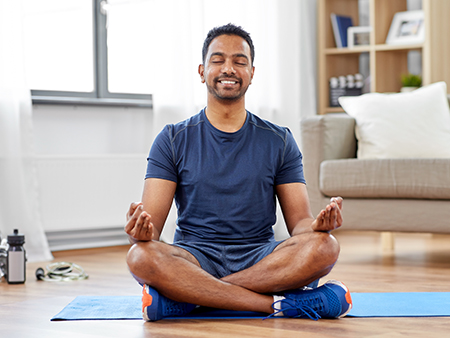
Meditation is the practice of teaching your mind to focus, and redirect your thoughts optimistically on a regular basis. Meditation is becoming dramatically popular nowadays as more people become aware of its multiple health benefits.
Meditation helps you become extremely conscious and aware of yourself. Many individuals regard it as a method of reducing stress and improving concentration for the betterment of their life.
Meditation is the best way to inculcate the habit of awareness in the mind. Meditation helps to augment human concentration power and improvises awareness and self-control.
People also utilise it to cultivate other desirable behaviours and sentiments, such as a positive mood, self-discipline, healthy sleep patterns and even enhanced pain tolerance. Meditation might help you forget about your worries for the day, and find inner calm.
9 Types of meditation
There are varied styles of meditation, but they all share some vital characteristics: a peaceful environment with minimal distractions, a focus of concentration and an open attitude.
Meditations are classified into 9 major types. Meditation techniques have their own individuality and bring significant benefits to the people who practise it. This article elaborates on the significance of each meditation along with its key benefits and advantages.
What is mindfulness meditation?
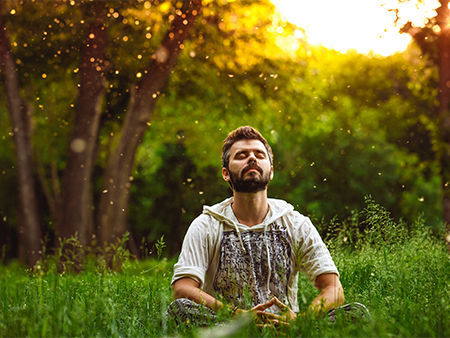
Mindful meditation is derived from Buddhist teachings and is the most common type of meditation in the world today.
Mindful meditation is all about paying attention to the ideas that flow in your mind. In this meditation, you merely observe and note any patterns that emerge in your mind.
This technique combines awareness and concentration. This sort of meditation is ideal for people who don’t have access to a yoga instructor because it can be performed alone. You can practise mindful meditation whenever and wherever you are.
Spiritual meditation
Almost all religions and spiritual traditions practise spiritual meditation.
Some of the prominent spiritual meditation practices are:
- Jewish kabbalistic practices
- Christian contemplative prayer
- Sufi dhikr (remembrance of God)
Focused meditation
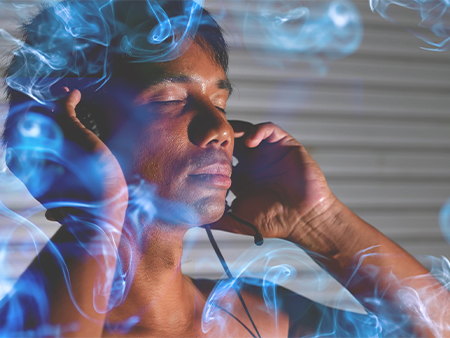
People who desire to try meditation for stress alleviation can benefit from focused meditation. It is also known as focused attention meditation (FAM).
Instead of striving to establish a clean mind without a precise focal point, this meditation lets you focus your attention on an item, sound or sensation.
Concentration on any of the five senses in your body is required for focused meditation. For example, concentrate on something internal, such as your breathing.
Movement meditation
Meditation or exercises that revitalise the body and mind through quiet and focused breathing are referred to as movement meditation. We can perceive bodily sensations, energy and gravity as embodied realities through movement meditation.
It is basically a movement-based type of meditation that helps you connect more deeply with your body and the present moment.
The key benefits of this meditation are that it helps you connect more deeply with your body and helps you to stay in the present moment. People who find serenity in action and desire to enhance body awareness would benefit from movement meditation.
Mantra meditation
Mantra meditation is a meditation performed by chanting a mantra (syllable, word or phrase). Mindfulness meditation and mantra recitation are the two fundamental components of most mantra meditation techniques.
Mantra recitation is recognised to have Buddhist and Hindu roots and it is widely adopted as a module while performing meditation.
Transcendental meditation
A type of meditation known as transcendental meditation is a silent way of repeating the mantra in the head. The major goal of transcendental meditation is to bring your body into a relaxed alert condition. Only certified practitioners can teach the transcendental meditation method.
Progressive relaxation
Progressive muscle relaxation is a relaxing technique performed more often to reduce anxiety and depression. It entails tensing and then relaxing each muscle individually. This aids in the release of bodily tension, which can help to relieve stress and anxiety.
According to studies, progressive relaxation provides a number of advantages, including pain alleviation and improved sleep.
Relaxing the muscles in your toes, neck and head is one form of progressive muscle relaxation. This should be done in a peaceful, distraction-free environment.
Loving-Kindness Meditation
LKM (Loving-Kindness Meditation) is a popular self-care approach for boosting happiness and reducing stress. Those who practise LKM daily might improve their capacity for forgiveness, connection with others, self-acceptance and other benefits.
Visualisation meditation
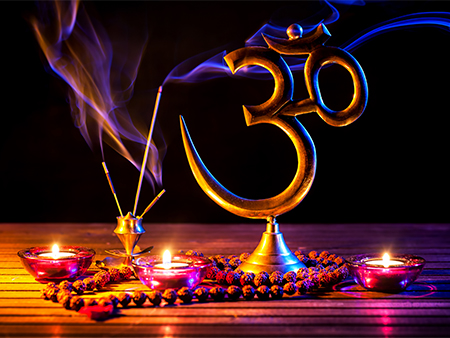
Visualisation meditation is a type of meditation which is all about focusing an imagery picture on the mind to augment the sense of mindfulness. People who constantly exercise visualisation meditation will be good at emotional stability and managing anxiety.
Who needs to practise meditation?
People with the following conditions can practise meditation,
Anxiety
Anyone who has ever experienced anxiety understands the peril of it. One in every fourteen people on the planet is affected by anxiety. You can kick away or mitigate your anxiety problems through meditation.
Asthma
There’s no denying that Asthma can be stressful, and having an Asthmatic child adds to an already stressful situation. Meditation can help you control your Asthma as well as relieve the stress from your day-to-day life.
Cancer
When used in conjunction with regular medical treatment, meditation has been found to help decrease anxiety, stress, exhaustion and enhance sleep and mood in certain cancer patients.
Chronic pain
Meditation augments the sense of mindfulness and alleviates pain sensitivity. Therefore, those who practise meditation consistently are less likely to get affected by chronic pain problems.
Depression
Depression remains a serious health concern among people irrespective of age. Depression increases the risk of heart disease and illness-related death. It also has an impact on people’s daily life by isolating them socially and impairing cognitive performance, particularly memory.
One of the prominent ways to control depression is meditation. Regular meditation practise can assist by altering how the brain responds to stress and anxiety.
Heart disease
The habit of incorporating the practise of meditation into one’s daily routine may reduce the risk of heart disease.
Experts looked at dozens of studies over the previous two decades and discovered that meditation can help with a variety of heart-related issues, making it worthwhile to include in a comprehensive heart-health programme.
High blood pressure
Meditation can lower blood pressure and prevent medication dependency. Relaxation techniques promote the development of a substance that dilates blood vessels and lowers blood pressure.
If you have high blood pressure and want to see results quickly, lie down and take deep breaths. This is how you can lower your blood pressure in minutes while also lowering your heart rate and blood pressure. When you’re stressed, hormones are released that cause your blood vessels to constrict.
Irritable bowel syndrome
In the case of irritable bowel syndrome (IBS), incorporating meditation into the treatment plan might be significant for good health. Meditation works to relieve IBS symptoms such as abdominal pain, bloating, constipation and brain fog.
Sleep problems
Stress can sometimes exacerbate existing sleep problems. Meditation may aid with better sleep. Meditation before night (at bedtime), can aid with insomnia and sleeping problems and help you to sleep better.
Tension headaches
The act of focusing one’s attention on the current moment while maintaining a nonjudgmental mindset is known as meditation. The goal is to assess your current mental and physical state and focus on feeling rather than thinking.
If you practise this, you will be less likely to get affected by problems like tension and headaches.
Benefits of meditation
Gaining a new perspective on stressful situations
Often when people face a new and stressful situation they may fall into depression. Meditation calms your mind and body to help you stay strong by bringing new perspective to your mind in difficult times.
Building skills to manage your stress
Meditation can help you achieve deep relaxation and a calm mind. During meditation, you concentrate on your attention and clear your mind of the muddled thoughts that may be bothering you and producing stress. This procedure brings improved physical and emotional health.
Increasing self-awareness
One of the advantages of practising awareness meditation is that it allows us to perceive ourselves more clearly. We can connect with ourselves, our wants, desires and limitations by silencing the noise and watching our thoughts without judgement or inner comments.
Focusing on the present
Allow your eyes to close and begin to focus on ambient sounds or sensations like your heartbeat, breathing or the breeze of a fan. This brings more present awareness to your mind.
Benefits of focusing on the present moment
- Reduces negative emotions
- Avoid overgeneralising
- Treat yourself with compassion
- Don’t jump to conclusions
- Live in the present
- Recognises negative thought patterns
- Increases imagination and creativity
Divergent thinking is activated by mindfulness. In another way, meditation allows your mind to be open to new thoughts. Second, mindfulness training enhances attention and makes it simpler to notice new and helpful concepts.
Increasing patience and tolerance
Through meditation, we can progressively uncover and learn the proper approach for letting go of impatience and intolerance. A regular meditation practise has the significance of reducing impatience.
Lowering resting heart rate
During yoga practise, focusing on breathing might help the heart rate to slow down. The parasympathetic nervous system is activated by slow breathing, which causes the heart rate to slow down.
Lowering resting blood pressure
The technique entails sitting quietly for 10 to 20 minutes with your eyes closed, repeating a word or phrase silently while breathing slowly and naturally.
Meditation approaches appear to reduce blood pressure in a small but significant way, either alone or in combination with standard medication. Transcendental meditation and mindfulness-based stress reduction have been shown to lower systolic and diastolic blood pressure clinically.
Improving sleep quality
Multiple cognitive and emotional processes that lead to poor sleep quality can be solved through mindfulness meditation. It has been demonstrated to reduce ruminative thinking, reduce emotional reactivity and enhance objective evaluation of significant experiences, all of which may help you sleep better.
Elements of Meditation
Focused attention
Focused attention meditation (FAM) is a basic meditation technique for improving attention control and monitoring. This improves good cognitive ability and discriminative brain activity.
Relaxed breathing
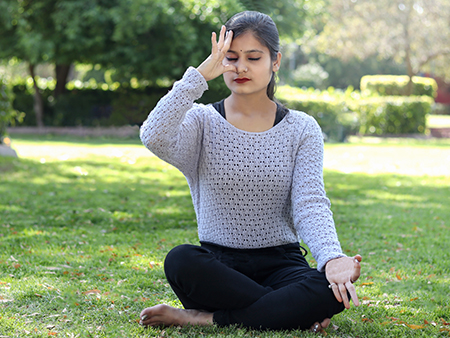
Relaxed breathing, which is also known as diaphragmatic breathing or abdominal breathing, conditions the body to stay calm and composed all the time. Relaxed breathing is slower and deeper than regular breathing.
A quiet sitting
Simply sitting with patience and stillness is meditation. Meditation is a technique for quieting the mind to amplify the focusing power. There are many different types of meditation, but the commonality that exists in most meditations is sitting in a quiet state.
Comfortable position
The optimum position to begin meditation is sitting. You might lose awareness and fall asleep if you lie down. Sitting in a comfortable and attentive position keeps you awake and focused while relieving your mind of the burden of information processing.
Open attitude
Rather than focusing on something, you should have an open attitude to concentrate on one certain thing. This brings clarity and avoids perplexity while taking decisions.
How to meditate properly?
It is essential to understand and learn the techniques on how to meditate for you to maintain a healthy lifestyle. You can easily practise meditation through any one of the following methods:
Breathe deeply
Below are the effective ways to perform breathing exercises without any hindrance:
- First make sure to relax your body
- Sit in a comfortable position
- Inhale deeply through your nose
- Allow your stomach to expand
- Exhale via your nose
- Put one hand on your stomach
- Feel your tummy lift as you breathe in
Scan your body
One of the most effective ways to start mindfulness meditation practice is to do a body scan. Body scanning involves paying attention to different parts of the body and bodily sensations from the feet to the head.
You bring awareness to every region of your body by mentally scanning yourself, recognising any aches, pains, tension or any discomfort.
Repeat a mantra
Performing meditation with a mantra helps you to relax and can have a tremendous influence on your body, especially if you have trouble concentrating or getting into the right frame of mind. Many people believe that repeating a mantra increases their attention and awareness.
Walk and meditate
Walking meditation is one of the most commonly practised meditations worldwide. Walking meditation is just focusing your mind on how it feels to walk while directing your attention to your feet and body.
Engage in prayer
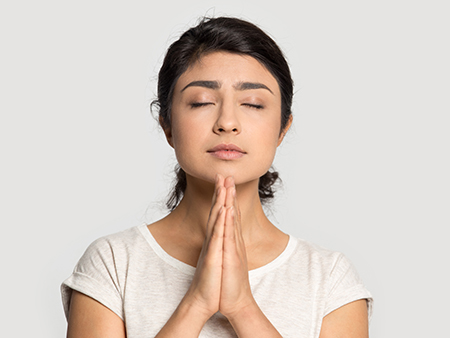
During prayer, many traditions express astonishment, amazement and reverence for God. One of the advantages of meditation before prayer is that it allows you to concentrate on the present moment and what you’re grateful for.
Read and reflect
Self-reflection is a method of evaluating yourself. Through self-reflection, you get to know more about yourself and you can capitalise on it to thrive in life.
Focus your love and kindness
Love and kindness build compassion and warmth toward ourselves and others. This method can aid in the reduction of stress, anxiety, despair, rage, fear and pain. It is frequently employed in conjunction with other forms of meditation, such as mindfulness, and is based on the notion of Metta (a Buddhist meditation), which is positive energy and kindness towards others.
Summing up
Every individual should practise meditation for the sake of bringing resilience and clarity to themselves. Meditation alleviates stress and helps to attain spiritual enlightenment.
In general, people are very bemused to choose the right mediation. Don’t be scared to branch out and experiment with different types of meditation. It usually takes a little trial and error to discover the right one for you.
FAQs
1. How do I find time to meditate?
Generally, hours before sunrise are said to be an ideal time for meditation as it brings calm and inner serenity to the mind.
2.Where should I meditate?
If you’re having trouble sticking to your meditation routine, go outside to meditate. If your indoor environment is unpleasant or noisy, practicing outdoor meditation can be a wonderful way to avoid fuss.
3.How do I start meditating again after a break?
4.What is the goal of meditation?
Meditation is a discipline that connects the mind and the body at its most basic level. The main objective of meditation is to help you achieve physical and emotional serenity.
5.Can I meditate lying down?
Yes, you can meditate lying down. It’s possible that lying down and meditating will provide you with the amount of comfort and spinal alignment required for your body.
6.What happens if you meditate every day?
Daily meditation can improve your work performance. Meditation has been shown to boost your capacity to multitask and raise your focus and attention. Meditation allows us to focus on the present moment, resulting in increased productivity.
7.Why do we cry during meditation?
Typically, crying during meditation is an opportunity to release pent-up emotions, which can benefit you in difficult times.
DISCLAIMER: THIS BLOG/WEBSITE DOES NOT PROVIDE MEDICAL ADVICE
The Information including but not limited to text, graphics, images and other material contained on this blog are intended for education and awareness only. No material on this blog is intended to be a substitute for professional medical help including diagnosis or treatment. It is always advisable to consult medical professional before relying on the content. Neither the Author nor Star Health and Allied Insurance Co. Ltd accepts any responsibility for any potential risk to any visitor/reader.





